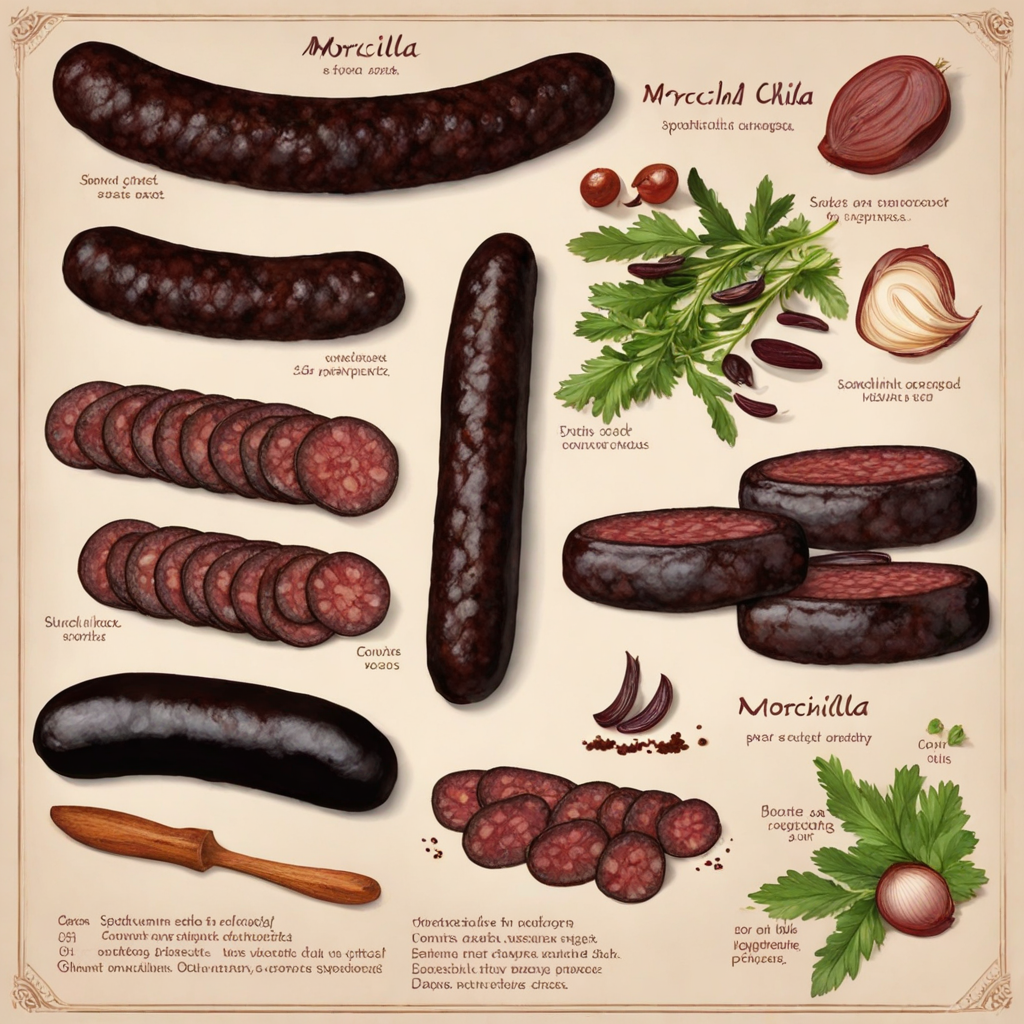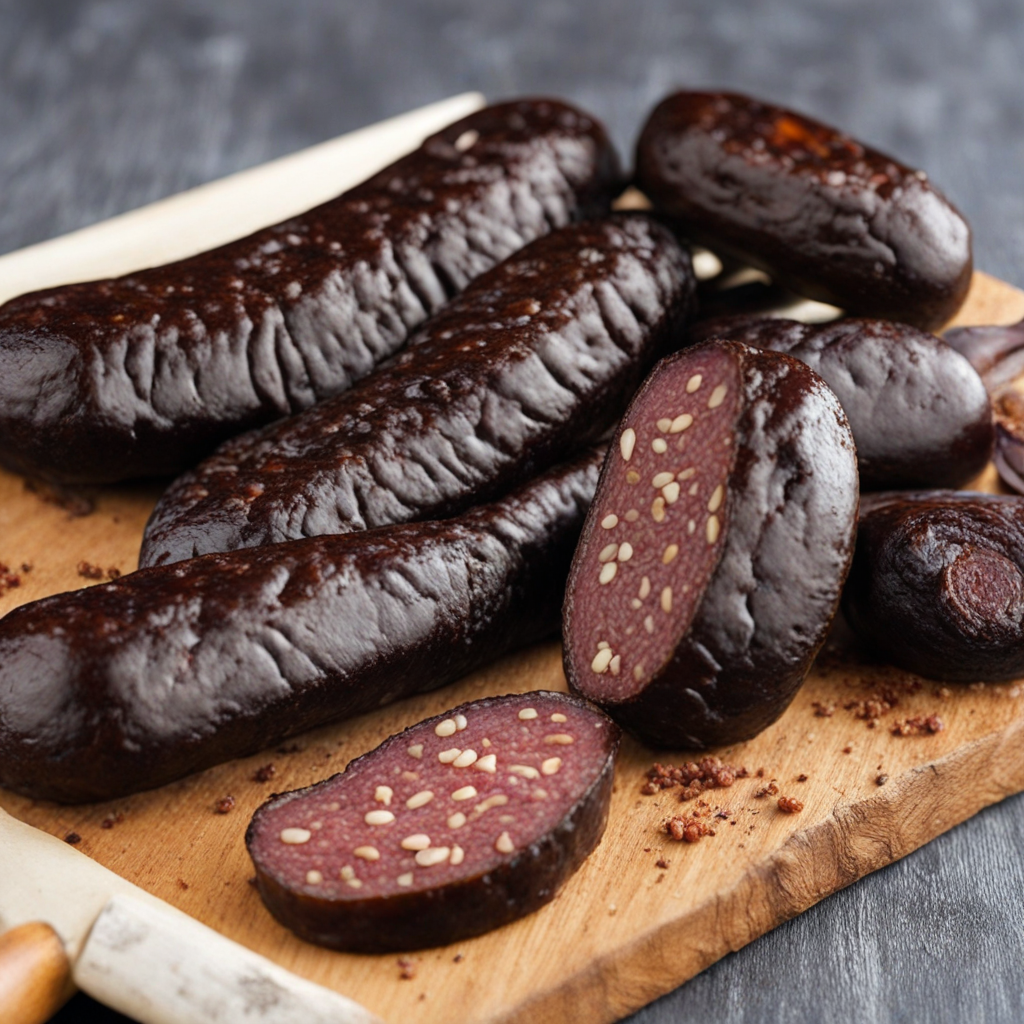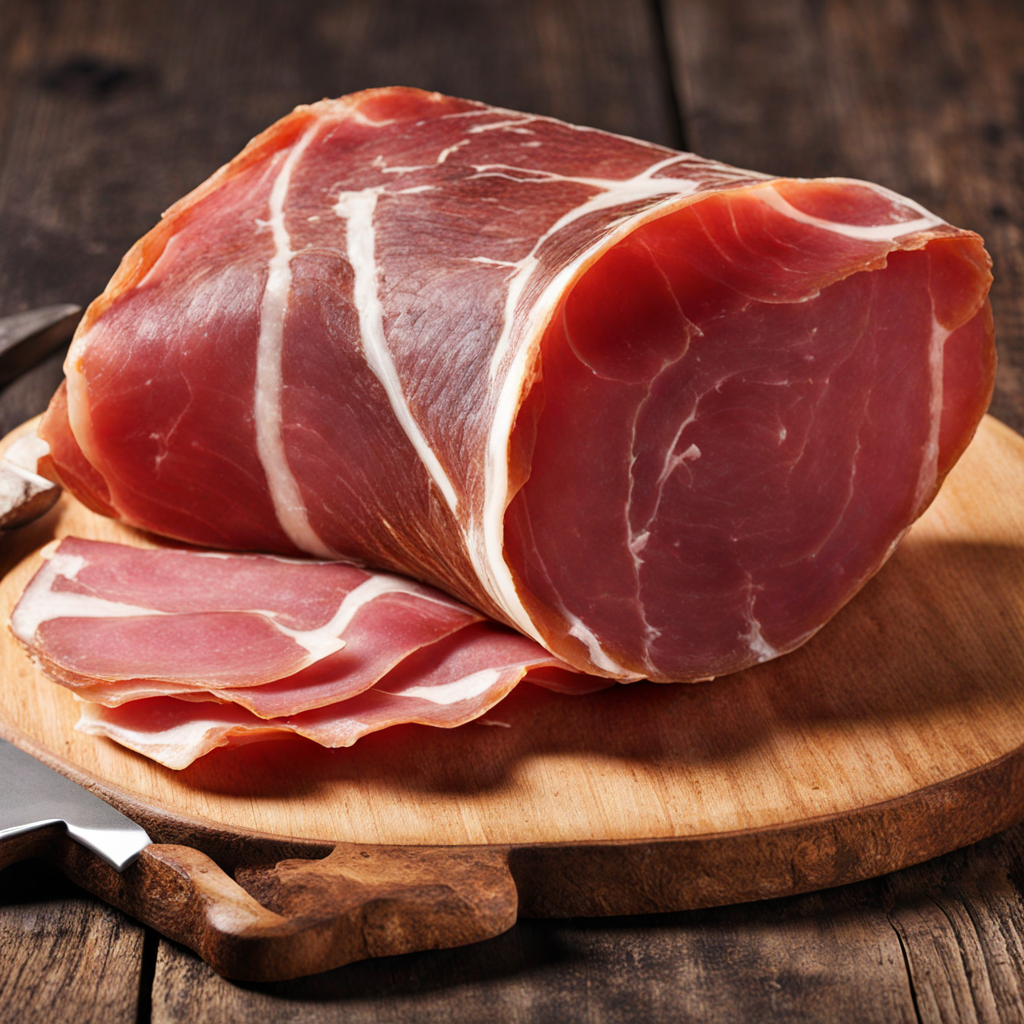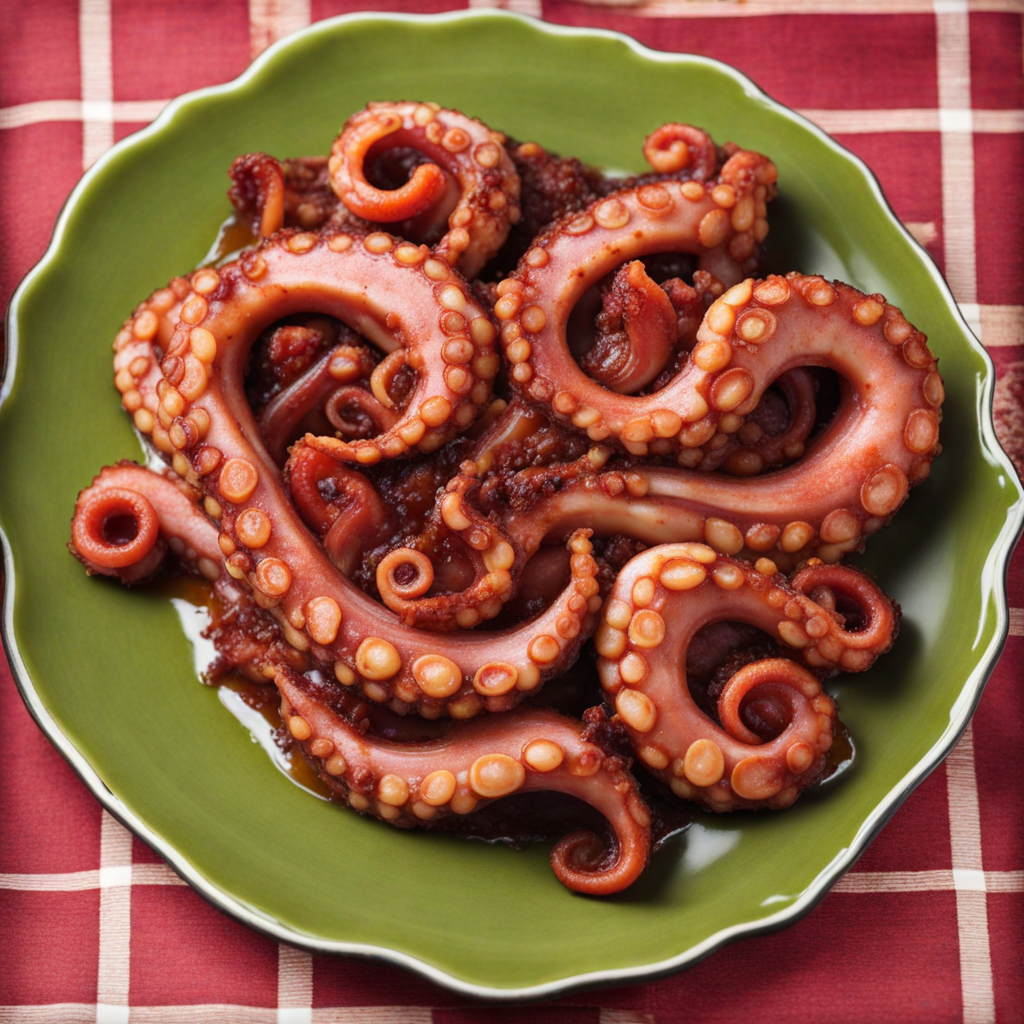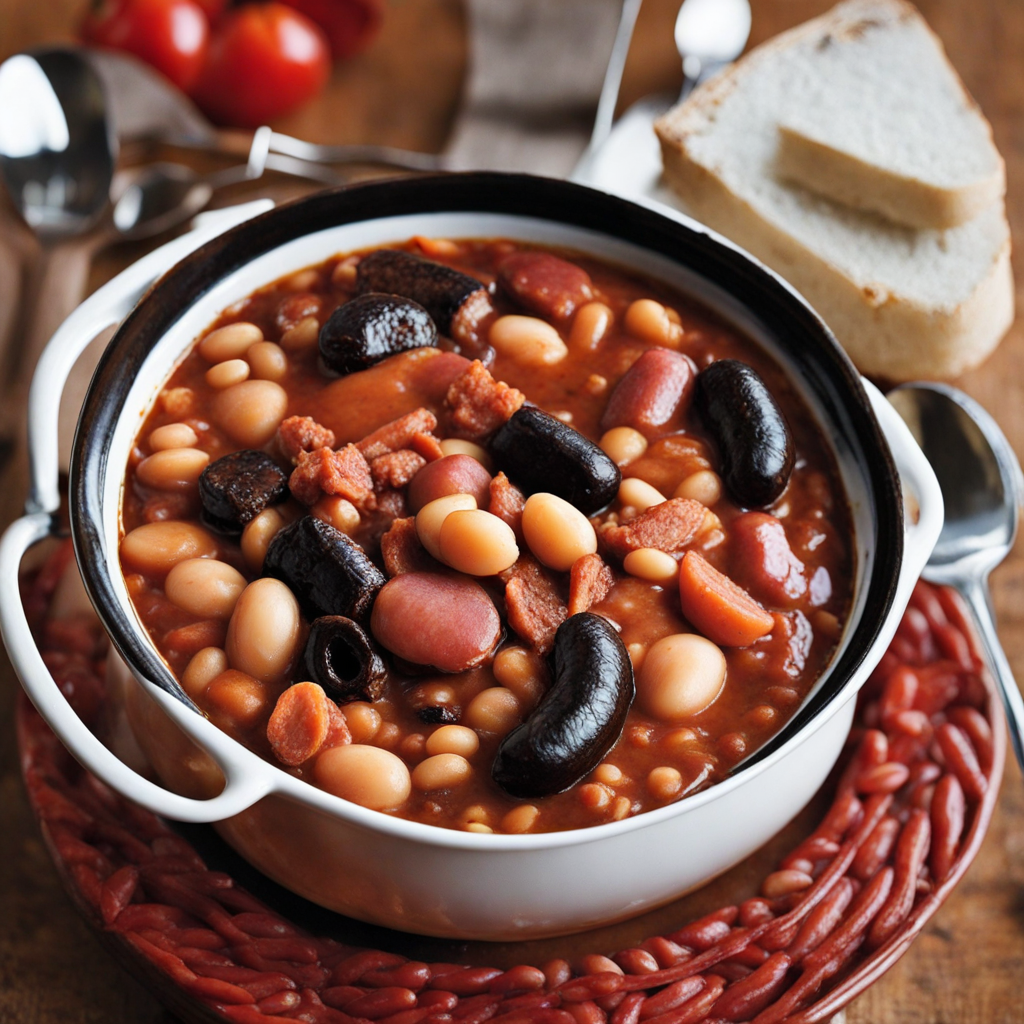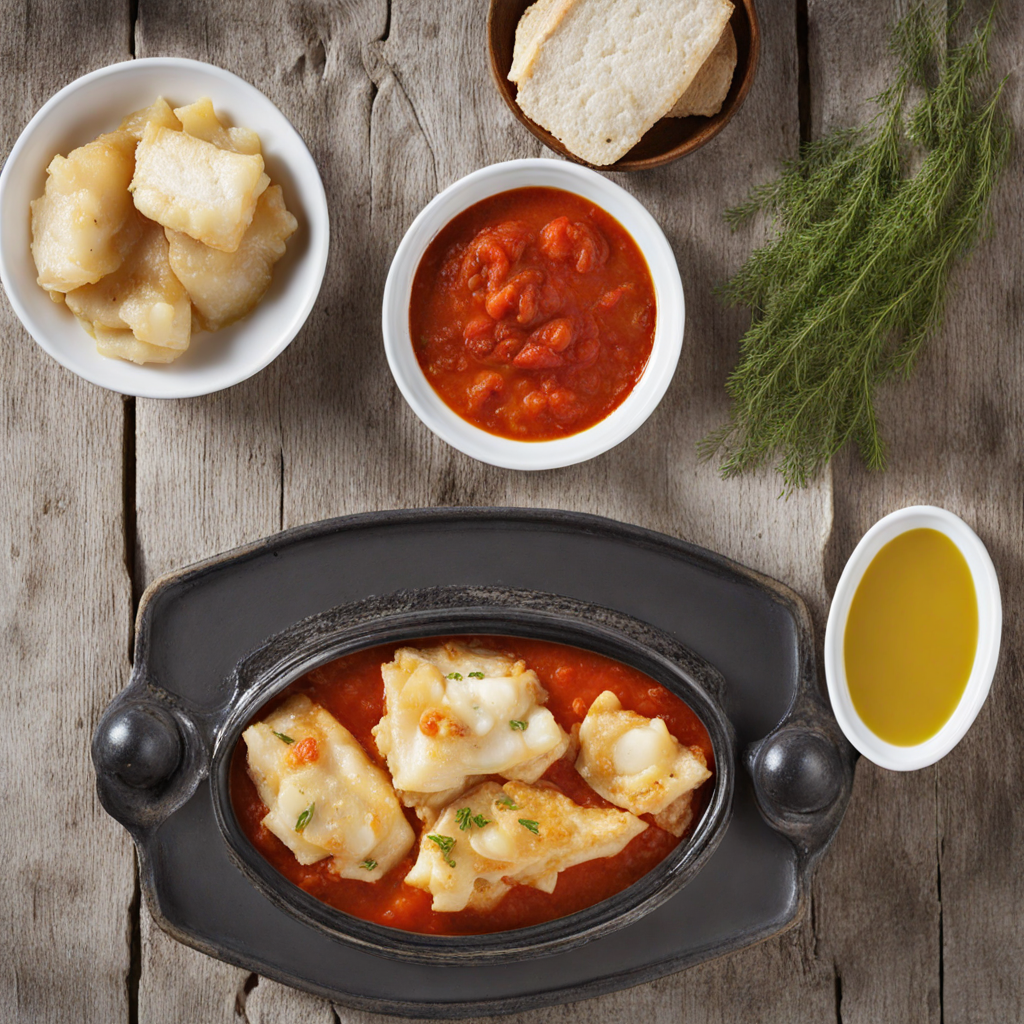Morcilla
Morcilla is a traditional Spanish blood sausage that offers a unique and rich flavor profile, deeply rooted in the culinary heritage of the country. Made primarily from pork blood, rice or onions, and a variety of spices, morcilla is celebrated for its robust taste and distinctive texture. When cooked, it develops a luscious, slightly grainy consistency that can be both savory and subtly sweet, depending on the region it hails from. The spices used in the preparation, such as paprika and black pepper, contribute to its aromatic qualities, making it a delightful addition to many dishes. In Spain, morcilla varies in flavor and preparation across different regions. For instance, the morcilla from Burgos is known for its heartiness, often containing a mixture of rice and onions, while the Andalusian version may incorporate various herbs and spices, providing a more aromatic profile. Whether grilled, fried, or added to stews, this versatile sausage pairs beautifully with a variety of ingredients, including lentils, potatoes, and even as a topping on tapas. It can also be enjoyed on its own, perhaps accompanied by crusty bread and a glass of robust red wine. For those looking to explore new tastes, morcilla presents an adventurous yet comforting option. Its complex flavors make it a perfect candidate for fusion dishes, where it can be integrated into modern culinary creations. As you savor each bite, the rich, earthy notes combined with the fragrant spices will transport you to the vibrant streets of Spain, inviting you to discover more of the country's diverse and delicious culinary landscape.
How It Became This Dish
The Rich History of Morcilla: A Spanish Culinary Tradition Morcilla, a type of blood sausage, is a cherished staple of Spanish cuisine, known for its rich flavors and deep cultural significance. This dish, while it may seem humble in appearance, boasts a history that intertwines with the traditions and lifestyles of the Spanish people. To appreciate morcilla fully, one must delve into its origins, cultural relevance, and the evolution it has undergone through the ages. #### Origins and Early History The roots of morcilla can be traced back to the ancient practice of blood sausage-making, which spans across various cultures worldwide. In Spain, the origins of morcilla are believed to date back to the Iberians and Celts, who inhabited the Peninsula long before the Roman conquest. The use of blood in food preservation and preparation was not only a necessity in ancient times but also a way to honor the animal and waste as little as possible. The earliest versions of morcilla were likely simple combinations of animal blood mixed with grains and spices. As time progressed, different regions in Spain began to develop their unique styles and flavors of morcilla, influenced by local ingredients and culinary practices. This regionality is a hallmark of Spanish cuisine and adds to the complexity of morcilla's identity. #### Cultural Significance Morcilla holds a significant place in Spanish culture, often associated with communal activities and celebrations. Traditionally, the process of making morcilla was a communal affair, where families and neighbors would gather to slaughter pigs during the winter months. This practice was not just about meat preservation; it was an occasion for bonding, storytelling, and the passing down of culinary knowledge from one generation to the next. In addition to its role in communal gatherings, morcilla has been featured prominently in Spanish festivals and feasts. The most notable is the celebration of San Andrés in regions like the Basque Country, where morcilla is enjoyed alongside other traditional dishes such as grilled peppers and local wines. Morcilla also reflects the agricultural practices of Spain, particularly in regions like Castilla y León, where it is a key component of the local diet. The sausage symbolizes the resourcefulness of rural communities, signifying a deep connection between food and the land. The Spanish saying "no hay morcilla sin cebolla" (there is no morcilla without onion) highlights the importance of ingredients and their role in transforming simple fare into something extraordinary. #### Regional Variations As morcilla spread across Spain, distinct regional variations emerged, each with its unique characteristics. Some of the most famous types include: 1. Morcilla de Burgos: This variant, from the province of Burgos, is one of the most well-known. It is made with pig's blood, rice, onions, and spices, resulting in a rich, flavorful sausage. Morcilla de Burgos is often grilled or fried and served with bread or as part of a larger dish, like cocido. 2. Morcilla de León: Hailing from León, this version is characterized by a firmer texture and the inclusion of blood, rice, and a unique blend of spices, including black pepper and paprika. It often accompanies stews and is enjoyed as a tapa. 3. Morcilla de Valencia: In Valencia, morcilla is often made with a sweet touch, incorporating ingredients like cinnamon and sugar. This sweeter variant pairs well with the region's famous paella. 4. Morcilla de Asturias: In the northern region of Asturias, morcilla incorporates spices such as cumin and is usually made with a higher fat content, giving it a distinctively rich flavor. 5. Morcilla de Galicia: In Galicia, the blood sausage is often made with a mix of blood and fat, seasoned with herbs and spices native to the region. It is commonly served grilled or as part of a traditional Galician stew. These variations highlight not only the diversity of Spanish cuisine but also the adaptability of morcilla, allowing it to thrive in different environments and cultures. #### Evolution and Contemporary Relevance In the 20th century, as Spain underwent significant political, social, and economic changes, so too did its culinary landscape. The rise of globalization and increased access to various foods led to a renaissance of traditional Spanish dishes, including morcilla. Chefs began to experiment with morcilla, elevating it to gourmet status in upscale restaurants while still honoring its rustic roots. In contemporary Spanish cuisine, morcilla is frequently used in inventive ways. Chefs have incorporated it into dishes like risottos, pizzas, and even tacos, showcasing its versatility and ability to complement a variety of flavors. The trend of farm-to-table dining has also rekindled interest in traditional ingredients like morcilla, as chefs seek to celebrate local produce and livestock. Moreover, the international interest in Spanish cuisine has led to morcilla gaining recognition beyond Spain's borders. Festivals celebrating Spanish food and culture have introduced this unique sausage to global audiences, allowing more people to appreciate its historical and culinary significance. #### Conclusion Morcilla is more than just a blood sausage; it is a symbol of Spain's rich culinary heritage, embodying the traditions, communal spirit, and regional diversity of the nation. From its ancient origins to its modern interpretations, morcilla continues to hold an important place in Spanish culture, reminding us of the importance of honoring our food traditions while adapting to contemporary tastes. As the world becomes increasingly globalized, morcilla stands as a testament to the enduring power of local ingredients and the stories they tell—stories that connect generations and celebrate the beauty of culinary heritage.
You may like
Discover local flavors from Spain


